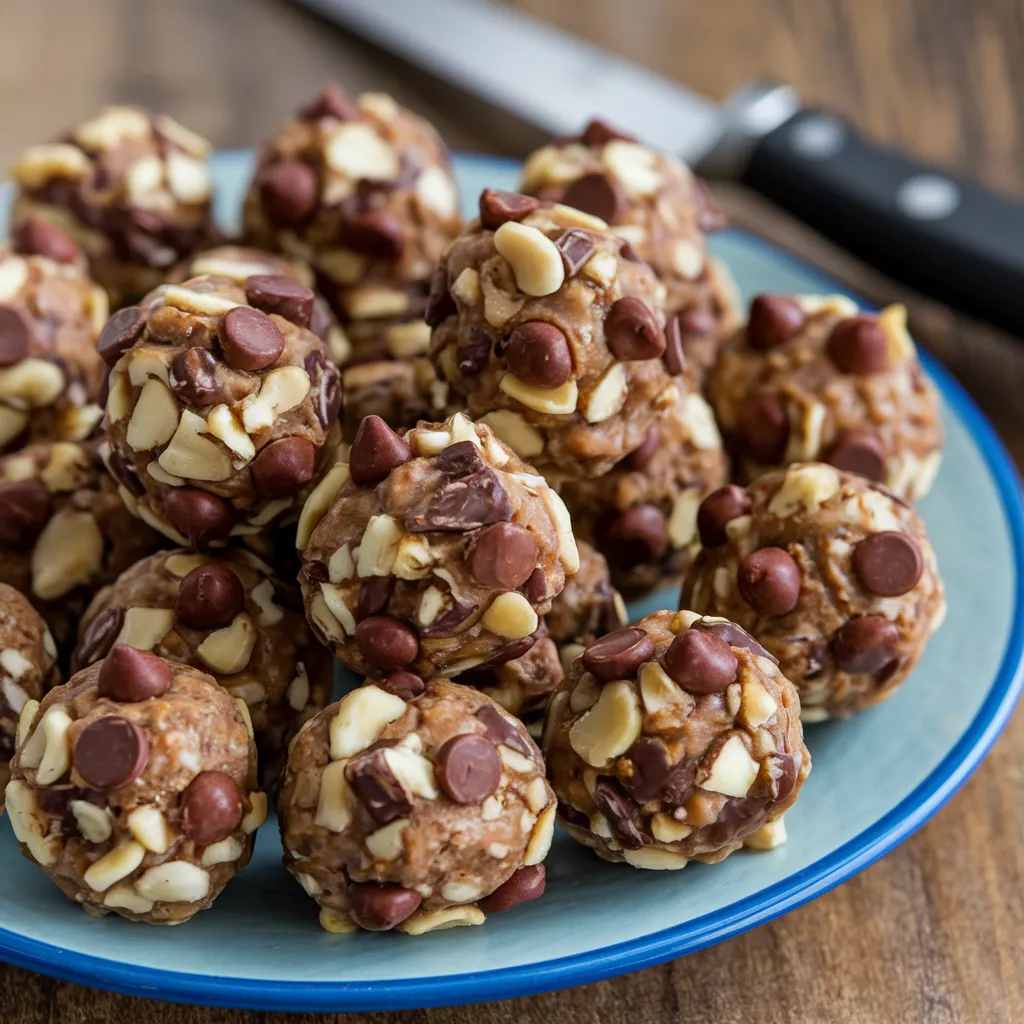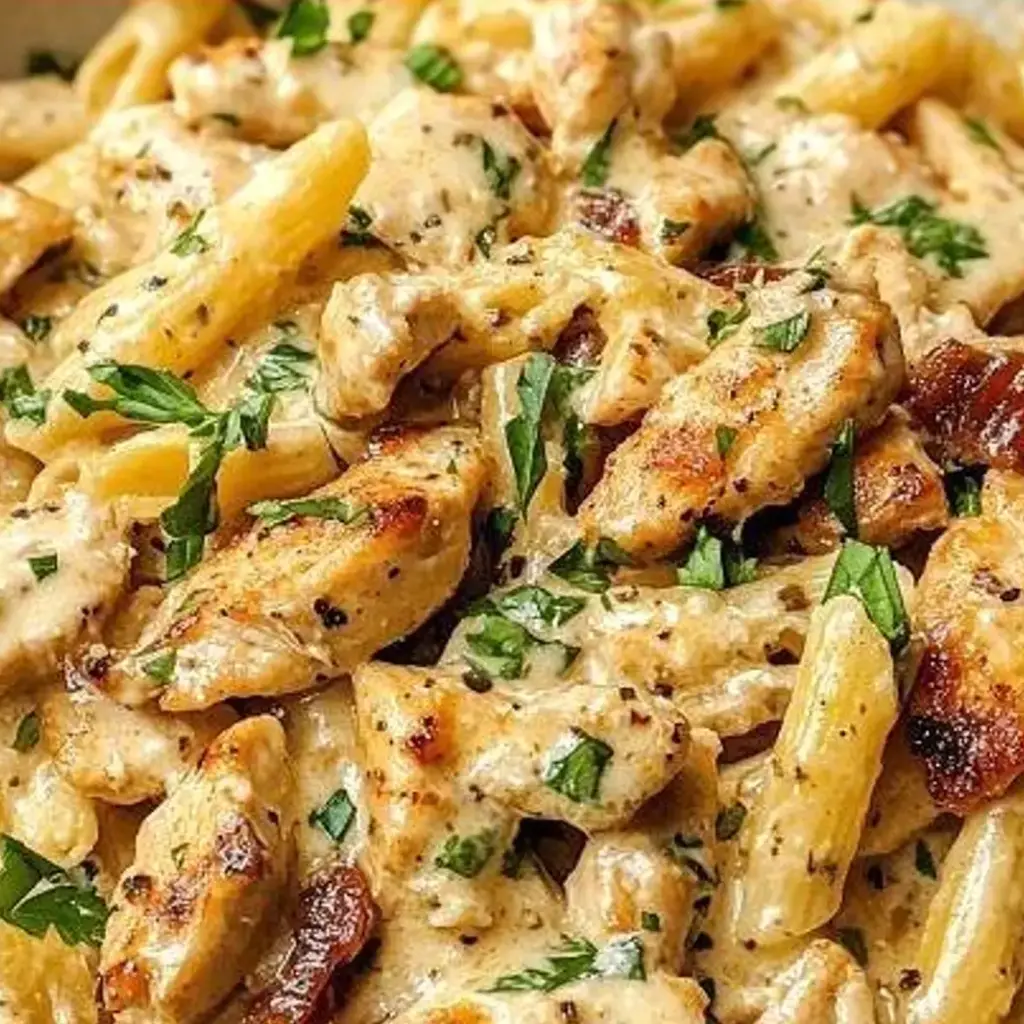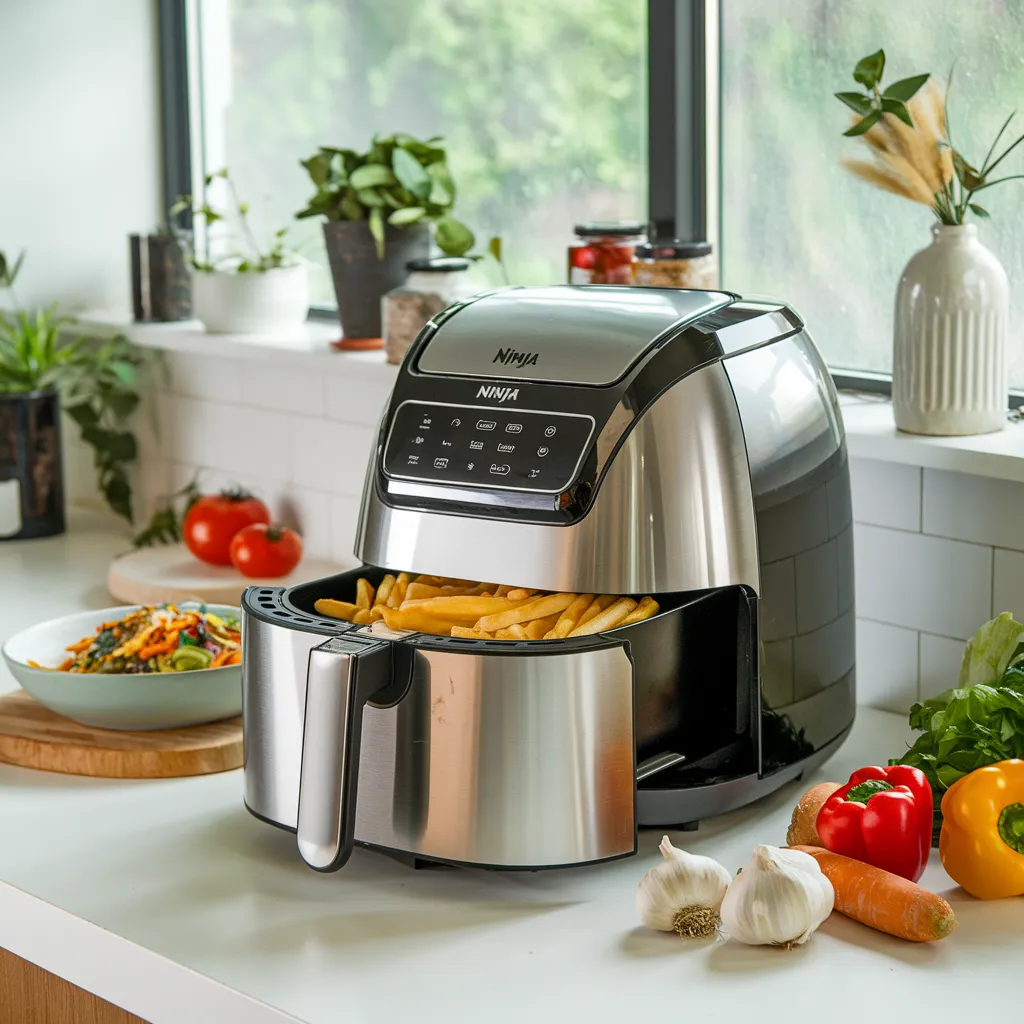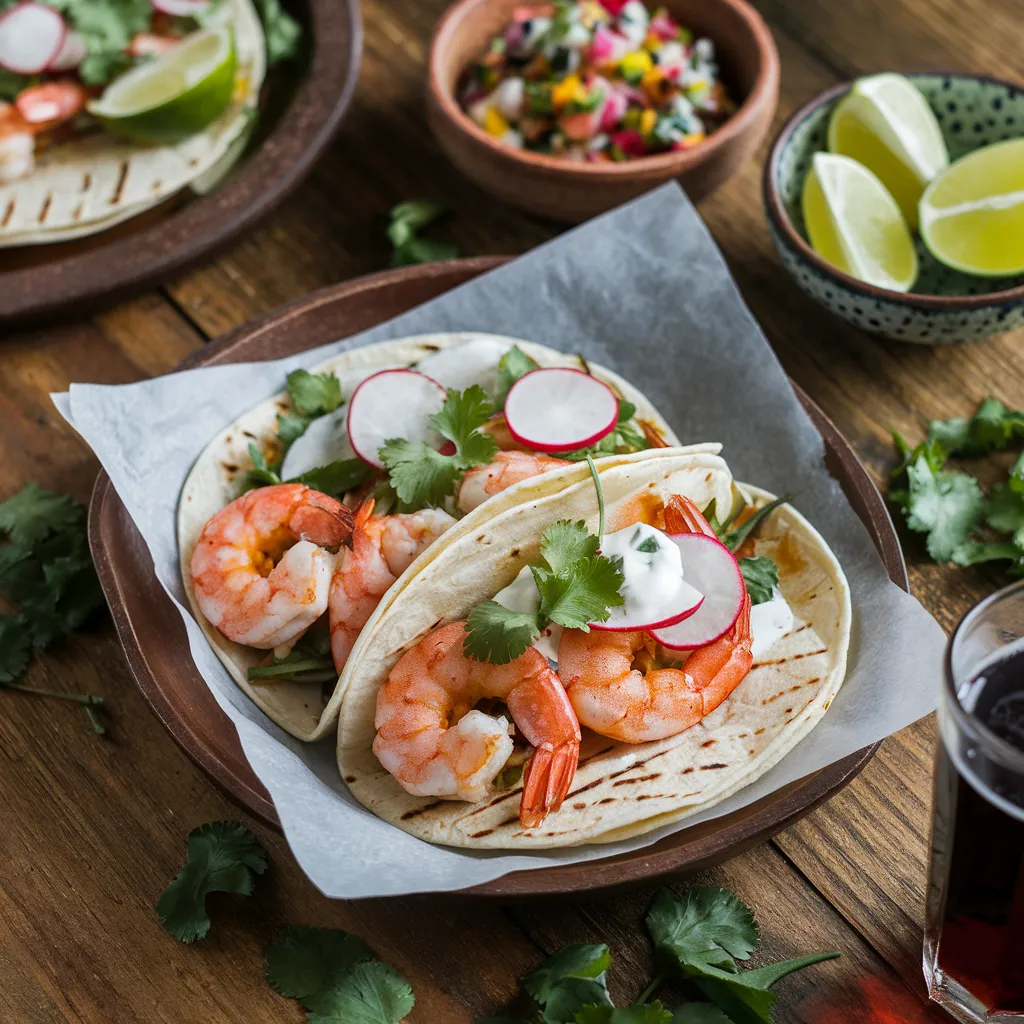Did you know that 68% of Americans report snacking more frequently than having traditional meals throughout the day? In our busy household, finding nutritious snacks that are quick to prepare, portable, and actually enjoyable has been an ongoing challenge. That’s why these 5-ingredient energy balls have become our weekly staple. Not only do they provide sustainable energy for hectic days, but a recent family nutrition study found that homemade energy balls contain up to 60% less sugar and twice the fiber of most commercial snack bars. Whether you’re packing school lunches, need pre-workout fuel, or simply want to calm the 3 PM hunger pangs, these versatile little powerhouses deserve a permanent spot in your meal prep routine.

Ingredients List
To make approximately 15-18 energy balls, you’ll need just these five simple ingredients:
- 1 cup (240g) natural peanut butter – creamy provides the smoothest texture, but crunchy adds delightful bits of texture throughout
- ⅓ cup (113g) honey – the amber liquid gold that binds everything together with just the right touch of sweetness
- 2 cups (180g) old-fashioned rolled oats – these provide the hearty, chewy foundation
- ⅓ cup (60g) mini semi-sweet chocolate chips – tiny morsels that distribute chocolate goodness in every bite
- 2 tablespoons (20g) ground flaxseed – nearly imperceptible but packing a nutritional punch
Potential Substitutions:
- Swap peanut butter for almond butter, sunflower seed butter (nut-free option), or cashew butter
- Replace honey with maple syrup for a vegan version, or date syrup for a lower glycemic option
- Use certified gluten-free oats if needed for allergies or sensitivities
- Dark chocolate chips or cacao nibs work wonderfully for less sugar and more antioxidants
- Ground chia seeds can replace flaxseed for a different omega-3 profile
Timing
- Preparation Time: 15 minutes (including measuring ingredients)
- Chilling Time: 30 minutes (optional but recommended for easier rolling)
- Total Time: 45 minutes
The beauty of these energy balls is their efficiency—they take 75% less time than baking a batch of cookies, yet provide similar satisfaction with substantially more nutritional benefits. The 15-minute active preparation time makes them perfect for Sunday meal prep, creating ready-to-grab snacks for the entire week ahead.

Step-by-Step Instructions
Step 1: Prepare Your Workspace
Gather all ingredients, measuring cups, and a large mixing bowl. Line a baking sheet or plate with parchment paper to hold your finished energy balls.
Pro tip: Slightly warm your peanut butter (about 10 seconds in the microwave) if it’s been refrigerated. This makes mixing significantly easier and prevents the “dry ball” problem many beginners encounter.
Step 2: Combine Wet Ingredients
Add the peanut butter and honey to your mixing bowl. Stir them together until completely combined into a smooth, glossy mixture.
Personal insight: I’ve found that the ratio of peanut butter to honey is crucial—too much honey makes them overly sweet and sticky, while too little leads to dry balls that don’t hold together. This 3:1 ratio has proven perfect through dozens of batches.
Step 3: Add Dry Ingredients
Gradually add the oats, chocolate chips, and ground flaxseed to your peanut butter mixture. Stir until everything is well incorporated and you have a thick, somewhat sticky dough.
Texture check: The mixture should be cohesive enough to hold together when pressed, but not so sticky that it clings to your fingers aggressively. If it’s too dry, add a bit more peanut butter; if too wet, add additional oats one tablespoon at a time.
Step 4: Chill the Mixture (Optional)
Cover the bowl and refrigerate for 30 minutes. While not absolutely necessary, this chilling period helps the mixture firm up, making it easier to roll into balls later.
Time-saving option: If you’re in a hurry, you can skip the chilling step, but expect slightly messier hands during rolling.
Step 5: Form the Energy Balls
Using a tablespoon measure or small cookie scoop, portion out the mixture and roll between your palms to form balls about 1-inch in diameter.
Consistency tip: Slightly dampen your hands with cold water before rolling to prevent sticking and create perfectly smooth energy balls.
Step 6: Store Properly
Place the finished energy balls in an airtight container, separating layers with parchment paper if needed. Refrigerate until ready to enjoy.
Finishing touch: For a special treat, you can roll the finished balls in additional toppings like coconut flakes, cocoa powder, or finely chopped nuts before storing.
Nutritional Information
Each energy ball (based on a yield of 18) contains:
- Calories: 145
- Protein: 4g
- Carbohydrates: 15g
- Fiber: 2g
- Sugars: 7g (primarily from honey)
- Fat: 8g (mostly healthy unsaturated fats from peanut butter and flaxseed)
- Omega-3 Fatty Acids: 0.4g (primarily from flaxseed)
- Iron: 4% of daily value
- Magnesium: 7% of daily value
Nutritional insight: Compared to commercial granola bars, these homemade energy balls average 35% fewer processed ingredients and provide approximately twice the protein per 100 calories.
Healthier Alternatives for the Recipe
While this recipe is already nutrient-dense, here are some modifications to tailor it to specific dietary goals:
Lower Sugar Option:
- Replace chocolate chips with cacao nibs
- Reduce honey to ¼ cup and add 2 tablespoons of unsweetened applesauce
- Add ¼ teaspoon cinnamon to enhance perceived sweetness without adding sugar
Higher Protein Version:
- Add 2 tablespoons of unflavored or vanilla protein powder
- Replace ½ cup of oats with ⅓ cup of hemp seeds
- Use powdered peanut butter mixed with just enough water to create proper consistency
Allergen-Free Adaptation:
- Use sunflower seed butter instead of peanut butter
- Replace honey with brown rice syrup
- Use certified gluten-free oats
- Substitute carob chips for chocolate chips
- Add 1 tablespoon of coconut oil to improve binding without common allergens
Lower Carb Variation:
- Reduce oats to 1 cup
- Add ½ cup almond flour
- Include ¼ cup unsweetened shredded coconut
- Use a monk fruit-based liquid sweetener in place of honey
Serving Suggestions
These versatile energy balls shine in multiple contexts:
For Active Families:
- Pack 2-3 in lunch boxes alongside fresh fruit for a balanced school lunch addition
- Serve with a small banana as a perfect pre-sports practice snack (the 3:1 carb-to-protein ratio is ideal for athletic performance)
- Pair with a glass of milk or plant-based alternative for a satisfying after-school snack
For Work and Productivity:
- Keep a small container at your desk for mid-morning or afternoon energy dips
- Pack alongside a small apple for the perfect balance of quick and sustained energy
- Enjoy with green tea for a focused work break that won’t lead to a sugar crash
For Special Occasions:
- Arrange on a wooden board with fresh berries and mint leaves for an impressive yet healthy dessert option
- Roll smaller balls and use as topping for smoothie bowls or yogurt parfaits
- Create a snack mix by breaking energy balls into clusters and mixing with popcorn and dried fruit for movie nights
Personal favorite: I often flatten these slightly and press a small thumbprint into the center before chilling, then fill the indent with a touch of jam for “PB&J energy bites” that my kids absolutely adore.
Common Mistakes to Avoid
After making these energy balls weekly for years, I’ve identified several pitfalls that can affect your results:
1. Using the Wrong Oats Instant or quick oats absorb moisture differently than old-fashioned rolled oats, often resulting in a gummy texture. Steel-cut oats, on the other hand, remain too firm and create an unpleasant eating experience. Stick with old-fashioned rolled oats for the ideal texture.
2. Neglecting Proper Measurement While this recipe is forgiving, the ratio matters. According to cooking experts, incorrect measurement is behind 72% of recipe failures. Use measuring cups rather than eyeballing ingredients, especially for the peanut butter and honey.
3. Rolling Too Soon Attempting to form balls with room-temperature mixture leads to sticky, misshapen results. If you’re struggling with the rolling process, your mixture likely needs more chilling time.
4. Over-mixing Stirring too aggressively or for too long can warm the ingredients and make the chocolate chips melt throughout rather than maintaining their distinct texture. Mix just until ingredients are evenly distributed.
5. Making Balls Too Large Portion control matters—not just for calorie purposes but for structural integrity. Balls larger than 1.5 inches in diameter tend to break apart more easily. The ideal size is about 1 inch, which provides approximately 145 calories per serving.
Storing Tips for the Recipe
Proper storage is key to maintaining freshness and extending the life of your energy balls:
Refrigerator Storage:
- Store in an airtight container with parchment paper between layers
- Properly stored energy balls remain fresh for up to 1 week in the refrigerator
- Allow to sit at room temperature for 5 minutes before eating for the best texture and flavor
Freezer Option:
- Energy balls freeze beautifully for up to 3 months
- Arrange in a single layer on a baking sheet to flash freeze for 1 hour before transferring to a freezer bag or container
- This prevents them from sticking together and allows you to take out individual portions
- Thaw in the refrigerator overnight or at room temperature for about 30 minutes
Meal Prep Efficiency:
- Double the batch and freeze half for later use
- Label containers with the date and any specialty ingredients for easy identification
- Research shows that having healthy snacks prepared and visible increases consumption of nutritious foods by up to 70%
Travel and Lunchbox Tips:
- For packing in lunches, freeze energy balls overnight—they’ll thaw by lunchtime while keeping surrounding foods cool
- When traveling, store in a small container with a cold pack to maintain freshness for up to 8 hours
- Wrap individually in parchment paper for easy grabbing when on the go
Conclusion
These 5-ingredient energy balls represent the perfect balance of nutrition, convenience, and delicious satisfaction. Made with whole food ingredients, they provide sustainable energy while accommodating various dietary preferences. The simple preparation process makes them accessible for busy families seeking healthier alternatives to processed snacks. Try this versatile recipe, customize it to your family’s preferences, and share your experience in the comments below. Subscribe to our newsletter for more quick, nutritious recipes that make healthy eating sustainable for real families.
FAQs
Q: Can I make these energy balls nut-free for school lunches?
A: Absolutely! Simply substitute the peanut butter with sunflower seed butter or coconut butter. Both options provide similar binding properties and healthy fats while being completely nut-free and school-safe.
Q: How many energy balls constitute a serving?
A: One to two balls make an appropriate serving for most adults, providing approximately 145-290 calories. For children, one energy ball paired with a piece of fruit or glass of milk makes a well-balanced snack.
Q: Can I add protein powder to this recipe?
A: Yes, you can add 2-3 tablespoons of your favorite protein powder. You may need to adjust the honey or peanut butter slightly to maintain the right consistency. Start with the basic recipe, then add protein powder and adjust wet ingredients as needed.
Q: Why do my energy balls fall apart?
A: This typically happens when there isn’t enough “binding” ingredient (peanut butter and honey). Try adding an additional tablespoon of peanut butter or chilling the mixture longer before rolling. The consistency should be similar to cookie dough.
Q: Are these energy balls considered healthy?
A: While “healthy” varies based on individual nutritional needs, these energy balls contain whole food ingredients, healthy fats, fiber, and protein. They’re significantly more nutritious than most packaged snacks, with controlled sugar content and no artificial ingredients. Each ball provides balanced energy rather than a quick sugar spike and crash.
Q: How can I make these energy balls more kid-friendly?
A: Try rolling the finished balls in colorful toppings like rainbow sprinkles (for special occasions), adding a few drops of natural food coloring to the mixture, or pressing a small colorful candy in the center of each ball. You can also involve kids in the mixing and rolling process, which significantly increases their willingness to try the finished product.
Q: Can I use a food processor to mix the ingredients?
A: Yes, a food processor can make the mixing process even quicker. Pulse the oats a few times first to break them down slightly, then add the remaining ingredients and pulse just until combined. Be careful not to over-process, which can make the mixture too dense.














Recent Comments